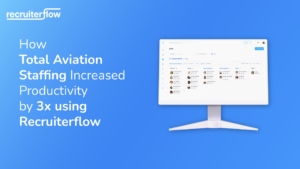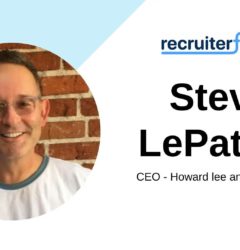
The power of automation and experimentation – A case study on Boulo Solutions

Boulo brought the ethos of automation, iteration, and experimentation to recruiting. It’s a brilliantly innovative way to look at recruiting that Boulo has executed.
We recently sat down to talk to Delphine Carter, co-founder of Boulo Solutions to understand how they operate and what makes them tick.
About Boulo Solutions
Founded by Catherine Gregory and Delphine Carter, Boulo connects smart and driven women with flexible project-based opportunities with companies in Birmingham, Alabama.
What made you choose Recruiterflow?
There are several reasons behind that. Before Recruiterflow, we were using a generic CRM but quickly realized that we need a purpose-built recruiting CRM. Recruiterflow fit that bill pretty well. Apart from that, we had three top considerations.
- Recruiterflow scales well: We were looking for a solution that would help us organize our candidates and clients. We are a growing business and needed something that could accommodate the size we are today and the size we intend to be in a year. RF seemed capable of scaling well.
- Easy of use: We found Recruiterflow simple and super easy to use. It had all the various features we needed to be built in a way that did not increase our complexity or learning curve for us.
- Product support: At the time of making a decision, we came back with a few suggestions that were listened to and implemented quickly! This gave us confidence that the team has a vision and is flexible to work with us and our needs.
What does your recruiting process look like and how do we fit in there?
There are two sides to our operations – candidate operations and client operations.
Client Operations:
Right now we get most of our leads from our website referrals. To attract relevant traffic on our website, we bet big on social platforms. We post content and also run paid promotions on these platforms. Apart from social platforms, we have built a presence in our local business community by attending meetups and sometimes even presenting at them! This has helped us build a brand and attract clients.
All of this means there is increased traffic on our website where we capture leads in a form. The information picked up from the form gets straight to Recruiterflow.
Candidate operations:
Candidates mainly come through social channels. We market extensively on LinkedIn, Instagram and Facebook. We also run paid promotions on these channels. This has worked out pretty well for us. In fact, we are hiring a dedicated social media manager to scale this! From these places, candidates come to our website and fill up a form.
After the form is filled, they are added to Recruiterflow via a Zap that runs automatically. Once a candidate comes to Recruiterflow, we have built a number of recipes and zaps that help us automate a bulk of our workflow and candidate communications. Using the combination of recipes and zaps, we send skill assessment tests and get more information about the candidate. All of this happens automatically and all we have to do is decide what the next step for the candidate and automation takes care of the rest.
This way, we have been able to relieve the team of admin tasks and repetitive communications so that we can focus on what’s important!
What impact on productivity have you seen after you started using Recruiterflow?
We have been able to organize our data in Recruiterflow with the help of custom fields quite well. This means the relevant data is easy to extract and now it takes us significantly less time to match a candidate with a job. There is a large breadth of filters available on the candidate level. The free text search is priceless on its own!
With the combination of Zapier and recipes (Recruiterflow’s recruiting automation features), each member of our team easily saves 5 hours every week.
What is your favorite feature of Recruiterflow?
What I really love is integration with Zapier! This integration allows rapid iteration in our processes. We use it to experiment with our communication and process instantly without changing a lot of things in the system and making a mess. This has helped us get better and better without disrupting everyone’s workflow in the team.
Recruitment





Manan Shah